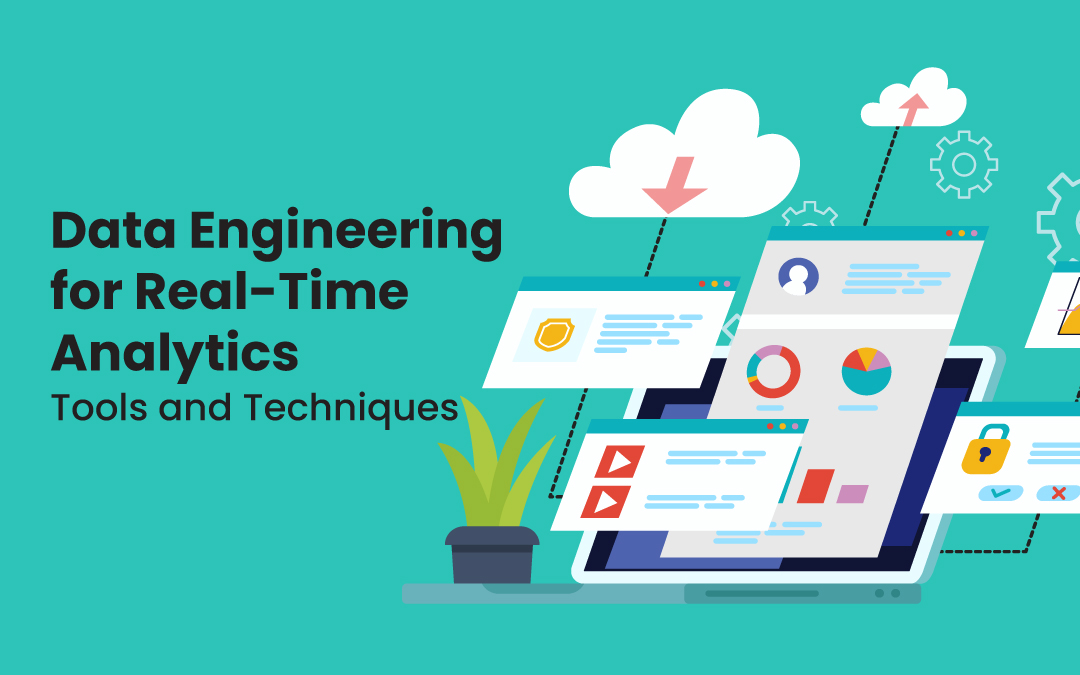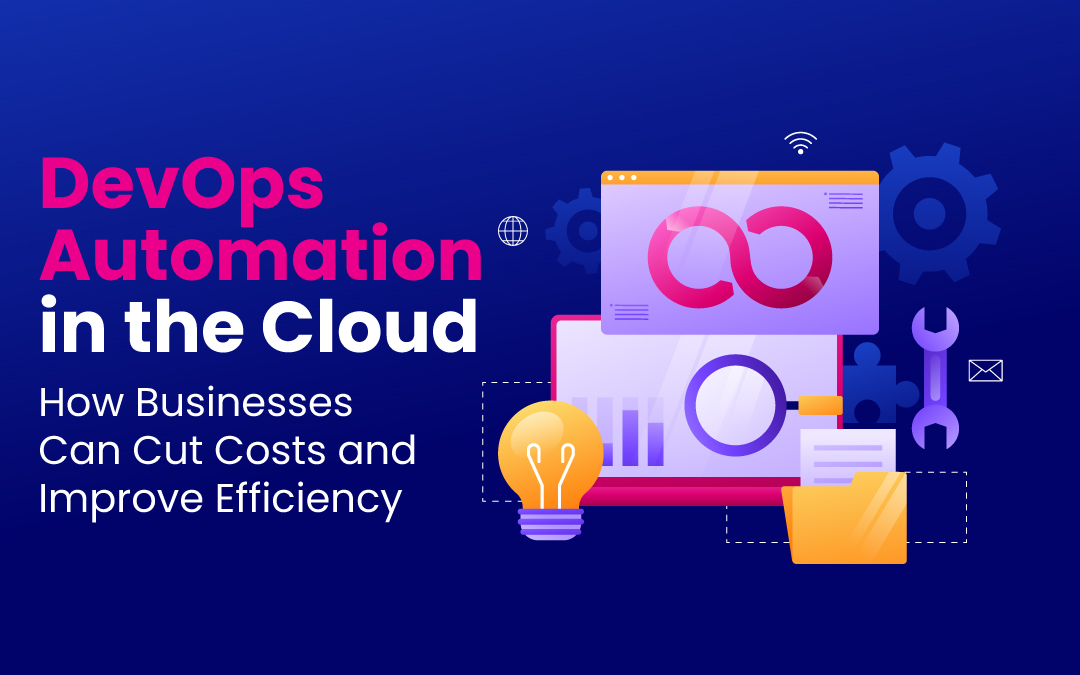
Real-time analytics refers to the process of analyzing data as soon as it becomes available, enabling organizations to make decisions instantly or within a very short time frame.
This capability is crucial in today’s fast-paced digital environment, where timely insights can lead to competitive advantages, improved customer experiences, and operational efficiency.
Data engineering forms the foundation of real-time analytics. It involves designing, building, and managing the systems and architectures that allow data to be processed and analyzed as it is generated.
Without robust data engineering services, real-time analytics would not be feasible. These services ensure that data flows seamlessly from source to insight, enabling businesses to act on fresh information with confidence.
This article explores the essential tools and techniques used in data engineering to support real-time analytics. We will discuss the key components of a real-time data pipeline, the various tools available for each stage of the process, and best practices for overcoming common challenges.
Additionally, we’ll look at case studies demonstrating real-time analytics in action and explore future trends in this rapidly evolving field.
Key Components of Real-Time Data Engineering
Data Ingestion
Data ingestion is the first step in a real-time analytics pipeline. It involves collecting and importing data from various sources into a system where it can be processed and analyzed in real-time.
Tools like Apache Kafka and Amazon Kinesis are popular choices for real-time data ingestion. These platforms are designed to handle high-throughput, low-latency data streams, making them ideal for real-time applications. By leveraging specialized data engineering services, businesses can ensure that their data ingestion processes are optimized for performance and scalability.
Data Processing
Once data is ingested, it needs to be processed quickly to generate actionable insights. This is where stream processing frameworks come into play.
Tools like Apache Flink, Apache Spark Streaming, and Google Dataflow allow for real-time data processing by performing operations such as filtering, aggregating, and enriching data on the fly. These tools are essential for transforming raw data into meaningful information in real-time.
Data Storage
Real-time analytics requires storage systems that can handle large volumes of data with minimal latency. Apache Cassandra and Amazon DynamoDB are commonly used for this purpose.
These databases are designed to scale horizontally, ensuring that they can manage the high write and read throughput required for real-time data access.
Data Modeling
Data modeling in a real-time context involves designing schemas that support quick data retrieval and efficient processing. Best practices include denormalization and the use of time-series databases, which are optimized for handling sequential data over time. Proper data modeling ensures that real-time analytics queries can be executed swiftly without compromising accuracy.
Tools for Real-Time Data Engineering
Stream Processing Frameworks
Stream processing frameworks are the engines that drive real-time data analytics. Apache Flink, for example, offers powerful capabilities for complex event processing and windowed operations, making it a strong choice for applications requiring precise, real-time insights. Apache Spark Streaming is another popular framework, known for its ease of use and integration with the broader Apache Spark ecosystem.
Message Queues and Event Streaming
Message queues and event streaming platforms like Apache Kafka and RabbitMQ are crucial for ensuring reliable data flow in real-time analytics pipelines. Kafka, in particular, is widely used due to its ability to handle large-scale data streams and its robust fault-tolerance features.
These tools allow for the decoupling of data producers and consumers, enabling scalable and resilient real-time data processing.
Databases for Real-Time Analytics
Databases optimized for real-time analytics, such as Redis, Aerospike, and Druid, are designed to deliver sub-millisecond query responses.
Redis, a popular in-memory data structure store, is often used for caching and real-time data access. Aerospike and Druid provide additional capabilities for handling large-scale analytics workloads with low latency.
Techniques for Building Real-Time Analytics Pipelines
Lambda Architecture
Lambda Architecture is a popular approach for building real-time analytics pipelines. It combines batch and stream processing to provide a balance between speed and accuracy.
In this architecture, data is processed in real-time through a speed layer for immediate insights and in batch through a batch layer for comprehensive, historical analysis.
Kappa Architecture
Kappa Architecture simplifies the real-time analytics pipeline by eliminating the batch layer altogether. Instead, it focuses solely on stream processing, making it more suitable for applications where real-time data is the primary concern. This architecture is particularly effective for use cases where data is continuously generated and processed.
Event-Driven Data Pipelines
Event-driven architectures are ideal for real-time analytics as they react to changes in data as they occur. These pipelines use events as triggers to process and analyze data, ensuring that insights are always up-to-date. Event-driven pipelines are commonly used in scenarios like monitoring, fraud detection, and IoT applications, where timely responses are critical.
Challenges and Best Practices
Scalability
One of the main challenges in real-time analytics is scalability. As data volumes grow, ensuring that the system can scale horizontally to handle the increased load is crucial. Best practices include using distributed systems, partitioning data, and employing load balancing to manage traffic effectively.
Data Consistency and Reliability
Maintaining data consistency and reliability in real-time pipelines can be challenging, especially when dealing with distributed systems. Techniques like eventual consistency, idempotent processing, and the use of reliable message delivery mechanisms can help ensure that data remains accurate and trustworthy.
Monitoring and Debugging
Real-time analytics pipelines require continuous monitoring to detect and resolve issues quickly. Tools like Prometheus, Grafana, and Elasticsearch are commonly used for monitoring and debugging. Implementing robust logging and alerting systems is also essential for maintaining the health of the pipeline.
Cost Management
Real-time data processing can be expensive, especially when dealing with large volumes of data. Cost management strategies include optimizing resource usage, leveraging serverless architectures, and choosing cost-effective tools and services. Regularly reviewing and adjusting the pipeline’s architecture can also help in managing costs effectively.
Case Studies
Real-Time Analytics in E-commerce
In e-commerce, real-time analytics is used to enhance customer experiences by providing personalized recommendations, dynamic pricing, and instant customer support. For example, an e-commerce platform might use real-time data to adjust pricing based on current demand or to recommend products that are trending.
Real-Time Analytics in Finance
The finance industry relies heavily on real-time analytics for activities such as fraud detection and algorithmic trading. Real-time data allows financial institutions to identify suspicious transactions as they occur and to execute trades based on the latest market information, reducing risk and increasing profitability.
Real-Time Analytics in IoT
In the IoT sector, real-time analytics is used for predictive maintenance and monitoring. For instance, sensors on industrial equipment can generate real-time data that is analyzed to predict when a machine might fail, allowing for timely maintenance and reducing downtime.
Future Trends in Real-Time Data Engineering
AI and Machine Learning Integration
The integration of AI and machine learning with real-time data pipelines is a growing trend. These technologies enable predictive analytics, anomaly detection, and automated decision-making, all in real-time. As AI and ML models become more sophisticated, their real-time applications will continue to expand.
Edge Computing
Edge computing is transforming real-time analytics by bringing data processing closer to the source. This reduces latency and allows for faster decision-making, especially in IoT applications. As edge computing technologies advance, their role in real-time data engineering is expected to grow.
Real-Time Data Governance
As real-time data processing becomes more prevalent, the need for robust data governance frameworks is increasingly important. This includes ensuring data quality, compliance with regulations, and protecting sensitive information in real-time environments. Emerging best practices in real-time data governance will play a critical role in the future of data engineering services.
Conclusion
Real-time analytics relies on robust data engineering practices to deliver instant insights. From data ingestion and processing to storage and modeling, every component of the pipeline plays a crucial role in ensuring that data can be analyzed as soon as it’s generated.
The future of real-time analytics is bright, with advancements in AI, machine learning, and edge computing driving innovation. Businesses that invest in these technologies and data engineering services will be well-positioned to stay ahead of the competition.
 FAQs
FAQs
Real-time analytics is the process of analyzing data immediately after it is collected to enable instant decision-making. It’s important because it allows businesses to respond quickly to changing conditions, providing a competitive advantage.
The main challenges include ensuring scalability, maintaining data consistency and reliability, monitoring and debugging, and managing costs. Addressing these challenges requires careful planning and the use of appropriate tools and techniques.
Tools such as Apache Flink, Apache Spark Streaming, and Google Dataflow are excellent for real-time data processing. Each tool has its strengths, and the choice depends on the specific requirements of the use case.
Lambda Architecture combines batch and stream processing to balance speed and accuracy, while Kappa Architecture focuses solely on stream processing for real-time data. The choice between them depends on the nature of the data and the application.
Best practices include implementing data validation checks, using reliable message delivery systems, and employing idempotent processing to handle data duplication and inconsistencies.
Businesses can start by identifying use cases where real-time insights would add value, selecting the right tools, and building a scalable data pipeline. Partnering with experienced data engineering services providers can also help accelerate the implementation process.
AI plays a crucial role in enhancing real-time analytics by enabling predictive analytics, anomaly detection, and automated decision-making. As AI technology advances, its integration into real-time data pipelines will become more common.
Costs can be managed by optimizing resource usage, using serverless architectures, and regularly reviewing the pipeline’s architecture for efficiency. Choosing the right tools and services based on the specific needs of the project also helps control expenses.
Share this post
Leave a comment
All comments are moderated. Spammy and bot submitted comments are deleted. Please submit the comments that are helpful to others, and we'll approve your comments. A comment that includes outbound link will only be approved if the content is relevant to the topic, and has some value to our readers.


Comments (0)
No comment